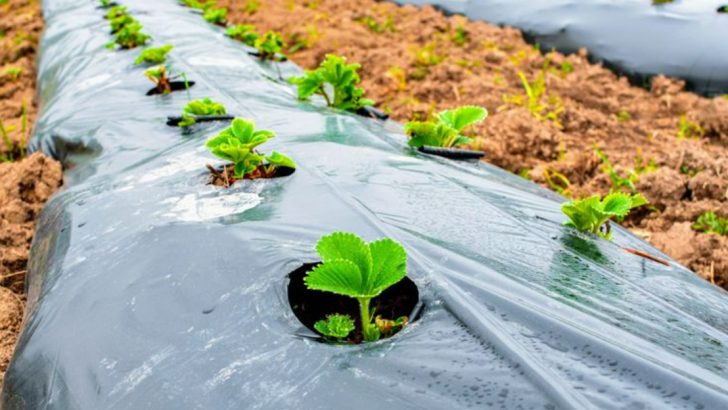Stop smothering your garden with garbage masquerading as mulch! Some so-called “mulches” are botanical nightmares—plastic sheeting that bakes roots, dyed wood chips leaching toxins, and rubber shredded like a midnight snack for your soil. Your plants gasp for air, battle chemical burns, and thirst for water they can’t reach. Every handful of the wrong material is a step backwards. Flip the script with nine true heroes: Crisp leaf litter that feeds microbes, Shredded straw that locks in moisture without suffocating roots, Cocoa hulls that smell like heaven (and keep critters at bay), And more earth-loving champions. Choose a mulch that breathes, nourishes, and shields—no science degree required. Grab your wheelbarrow, toss out the imposters, and let your garden gulp down the good stuff. Ready to mulch like a pro? Your soil—and your green thumb—will throw you a party.
Rubber Mulch

Rubber mulch might seem like a convenient solution due to its durability and appearance. However, it can lead to a plethora of problems for both your plants and the environment.
Firstly, rubber mulch can release harmful chemicals as it breaks down, contaminating the soil. Furthermore, it lacks the organic benefits that natural mulches provide, such as decomposing into valuable nutrients.
A synthetic option with a hidden dark side, rubber mulch is best left out of your garden. Instead, consider using shredded bark or wood chips that naturally enrich the soil.
Cocoa Hulls

Cocoa hulls might offer an enticing chocolate scent, but they’re not as sweet for your garden. Though visually appealing, they pose a risk to pets, particularly dogs. Ingestion can lead to chocolate toxicity with potentially fatal consequences.
Moreover, they have a tendency to mold in humid conditions, creating an unhealthy environment for plants. Opting for a pet-friendly mulch like pine needles can ensure safety and comfort for all garden inhabitants.
The fragrant allure of cocoa hulls isn’t worth the risk they pose to your beloved pets and plant health.
Dyed Mulch
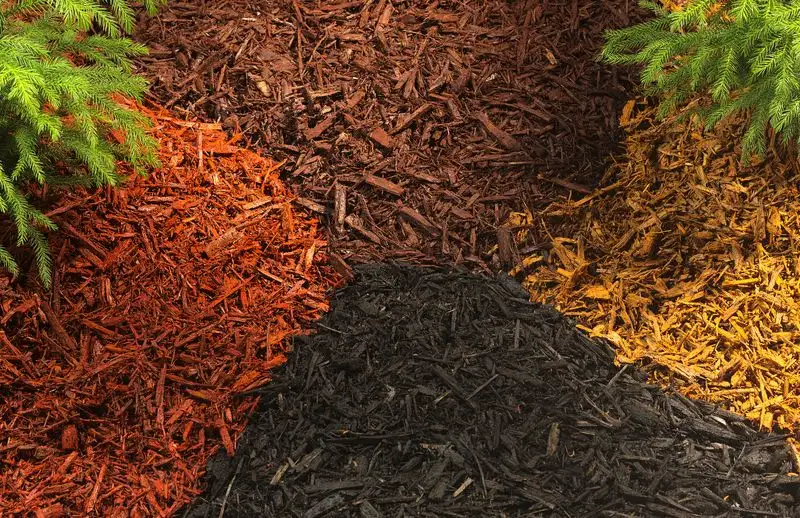
Dyed mulch might catch the eye with its vibrant colors, but the dyes can be harmful to plants. These chemical dyes can leach into the soil, disturbing the natural nutrient balance and potentially harming beneficial organisms.
Additionally, dyed mulch often originates from recycled wood, which can contain impurities like nails or treated wood. A safer and eco-friendly alternative is to use natural, undyed wood chips.
Choosing a mulch that complements the garden’s natural beauty without chemical alterations supports a healthier ecosystem.
Plastic Mulch
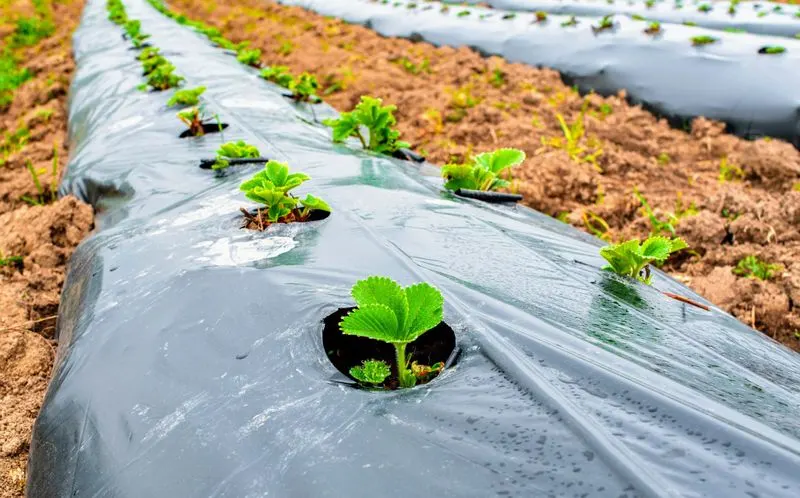
Plastic mulch may offer a neat appearance and weed control, but its long-term impacts can be detrimental. It doesn’t allow the soil to breathe, leading to poor water infiltration and root growth issues.
This impermeability can create a waterlogged environment, stressing plants. Additionally, plastic mulch doesn’t decompose, contributing to environmental waste.
Switching to biodegradable mulches like straw or hay can solve these problems, allowing gardens to thrive naturally while reducing waste.
Hay
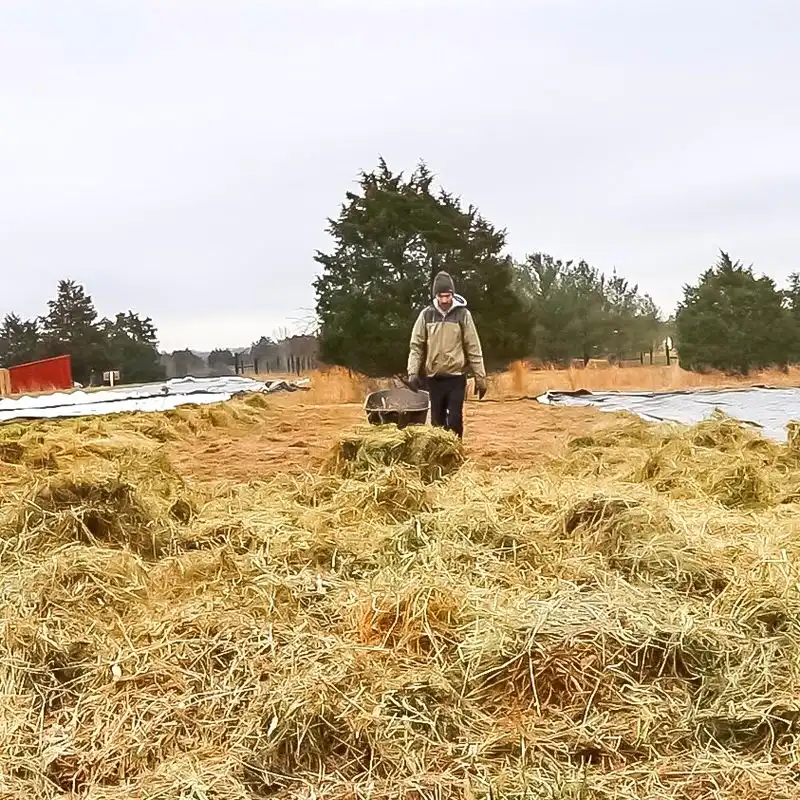
While hay seems like an accessible and natural choice, it often harbors weed seeds, complicating garden maintenance. Using hay as mulch can unintentionally introduce a variety of unwanted plants into your garden beds.
The additional labor of weeding can outweigh any benefits hay might provide. An effective alternative is straw, which generally contains fewer seeds and provides similar coverage.
Choosing the right mulch can make a significant difference in labor and plant health, allowing for a more sustainable gardening experience.
Grass Clippings
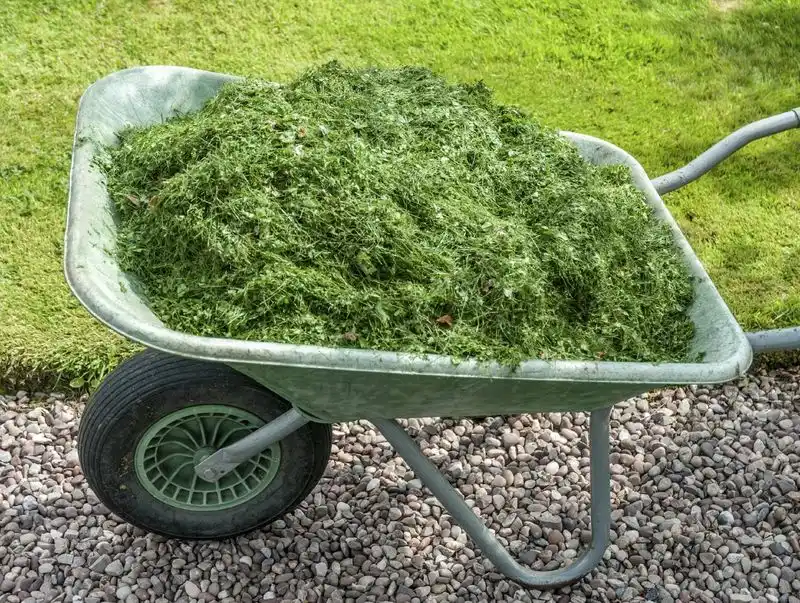
Grass clippings, fresh and abundant, might seem ideal for mulching, but they can quickly become problematic. When applied too thickly, they form a dense layer that traps moisture and heat, promoting rot and fungal growth.
This can suffocate plant roots and create unfavorable conditions for growth. Instead, clippings should be dried and used sparingly or added to compost.
Exploring mulching options like leaves or wood shavings can provide a more balanced and healthy environment for plants to flourish.
Stone or Gravel
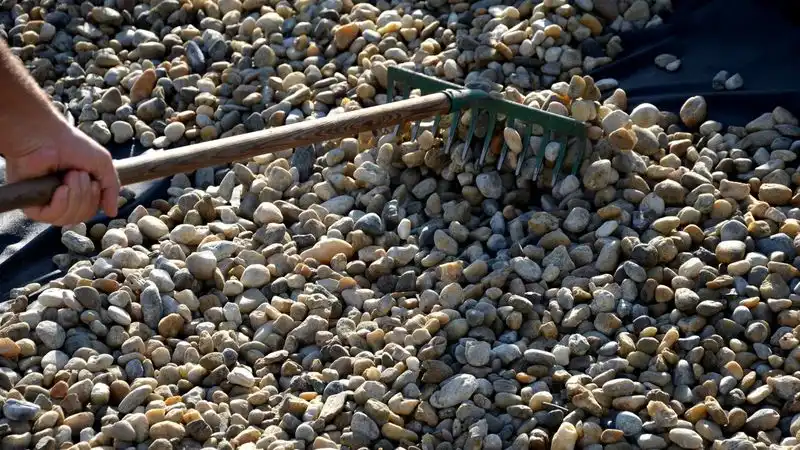
Stone or gravel mulch brings a modern look but lacks the benefits of organic mulches. They don’t break down, thus contributing no nutrients to the soil. This can result in a sterile environment where plants struggle to thrive.
Additionally, stones can heat up excessively during sunny days, affecting plant roots and soil moisture negatively. Instead of stones, consider using organic mulches that enhance soil health and retain moisture.
Achieving aesthetic appeal without compromising plant health is possible with the right mulch choice.
Sawdust

Sawdust can deplete the soil of nitrogen as it decomposes, stalling plant growth. This imbalance can lead to yellowing leaves and reduced vigor in plants.
Moreover, fresh sawdust can compact and create a barrier that restricts water and air movement to the roots. It’s advisable to compost sawdust first or use it sparingly mixed with other organic materials.
For a balanced garden environment, explore alternatives like composted leaves or pine bark that support plant health without nutrient depletion.
Cardboard or Newspaper
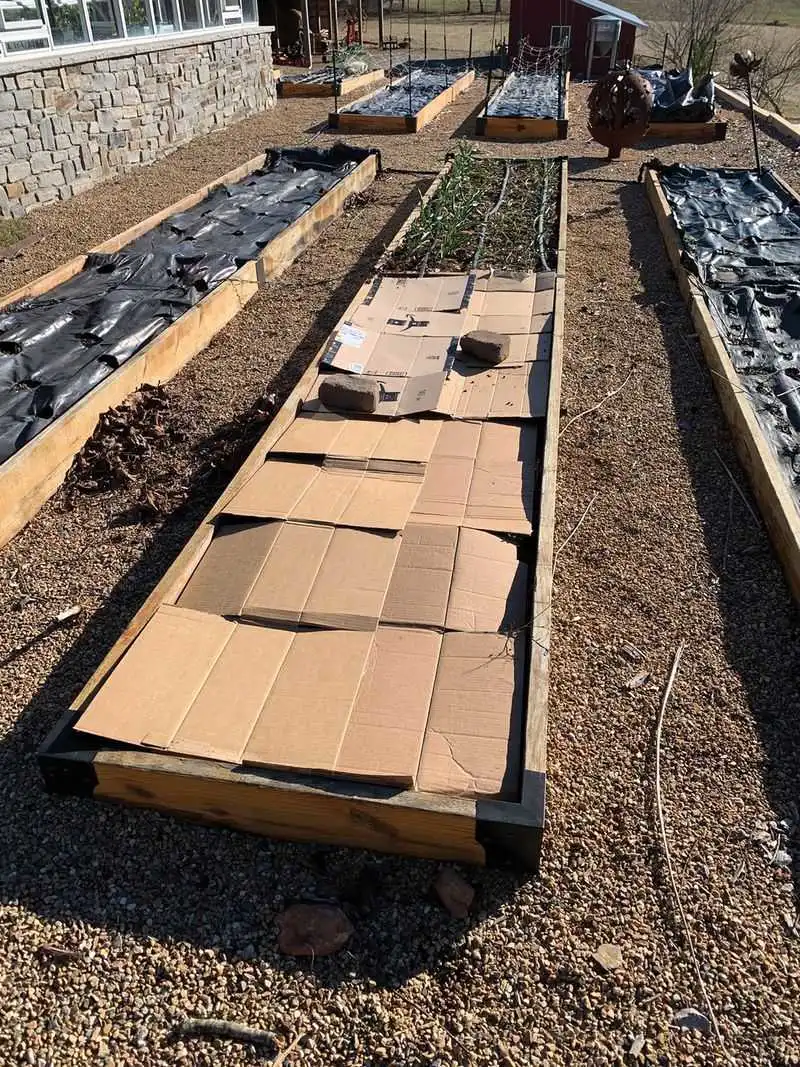
Cardboard or newspaper mulch is often used for weed suppression, but it comes with its own set of challenges. These materials can inhibit water and air flow if not applied carefully, leading to issues with root development.
Moreover, the inks used in newspapers can sometimes contain harmful chemicals. Instead, consider using organic mulches like straw or wood chips that naturally integrate into the soil.
Choosing materials that enhance rather than hinder plant growth is essential for a thriving garden.
Shredded Leaves
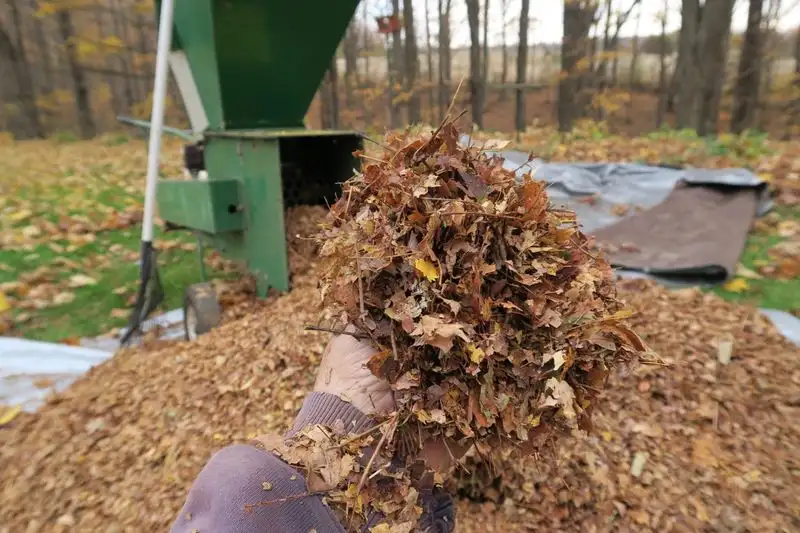
Shredded leaves, unlike many synthetic options, offer a natural and beneficial approach to mulching. They enrich the soil as they decompose, promoting healthier plant growth. Their ability to regulate soil temperature and moisture makes them a valuable choice.
Moreover, leaves are usually abundant and cost-effective, making them accessible for most gardeners. They also encourage earthworm activity, improving soil structure.
Embracing the simplicity and efficiency of leaf mulch can lead to a more vibrant and sustainable garden.
Pine Needles
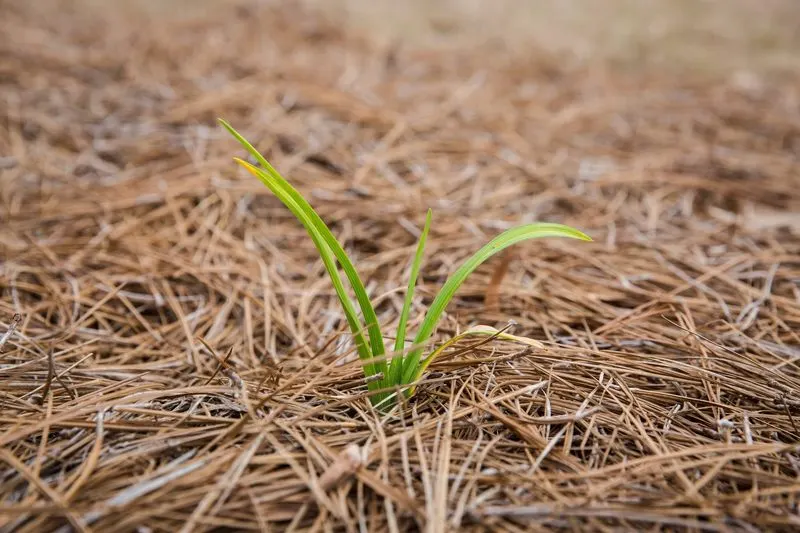
Pine needles provide excellent mulch, especially for acid-loving plants. Their natural acidity enhances soil conditions for plants like azaleas and blueberries.
Additionally, pine needles are long-lasting and help prevent soil erosion, making them ideal for sloped gardens. Their ability to interlock minimizes weed growth while allowing water and air to penetrate the soil.
Choosing pine needles can contribute to a well-maintained garden that supports specific plant needs and natural beauty.
Composted Manure

Composted manure is a powerhouse mulch that enriches the soil with nutrients, improving plant vitality. It’s an organic option that promotes robust growth by enhancing soil structure and nutrient content.
The decomposition process eliminates pathogens, ensuring safety for garden use. However, it’s crucial to use well-composted manure to avoid burning plants.
Integrating composted manure into your garden routine results in thriving plants and a sustainable environment, making it a top choice for gardeners.
Wood Chips
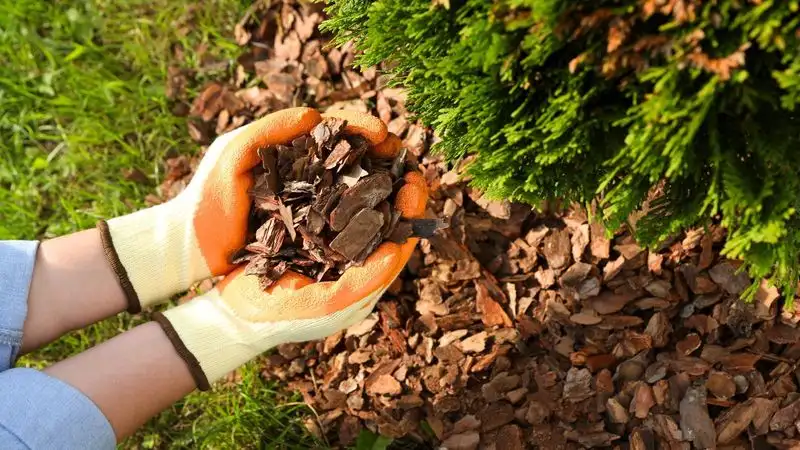
Wood chips provide an attractive and effective mulching solution, offering moisture retention and temperature regulation. As they decompose, they add organic matter to the soil, improving its fertility and structure.
They also reduce weed growth, making garden maintenance easier. It’s essential to ensure wood chips are free from contaminants like chemical treatments to fully benefit from their natural advantages.
A versatile and appealing choice, wood chips complement various garden styles and plant needs, enhancing both aesthetics and function.
Straw
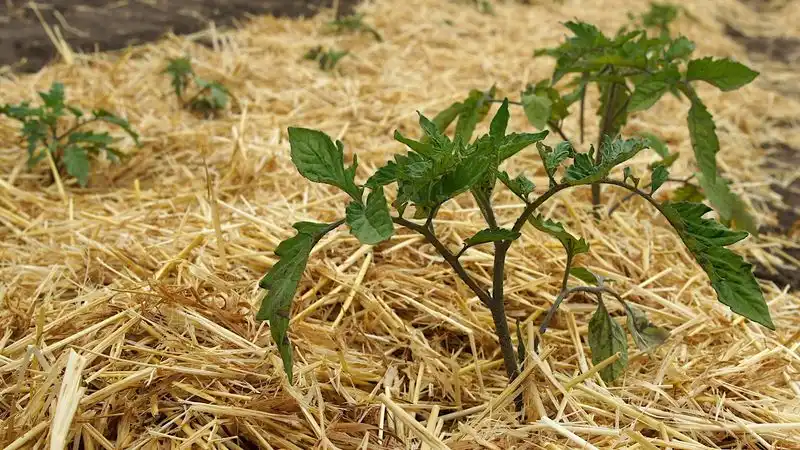
Straw offers a light and airy mulch option that prevents soil compaction and facilitates water penetration. It’s especially beneficial for vegetable gardens, protecting young plants and retaining moisture.
Straw decomposes slowly, providing a steady release of nutrients over time. It’s essential to choose straw over hay to avoid introducing seeds and weeds.
This natural and practical mulch can transform a garden, supporting plant health and reducing labor, with its easy application and beneficial properties.
Bark Mulch
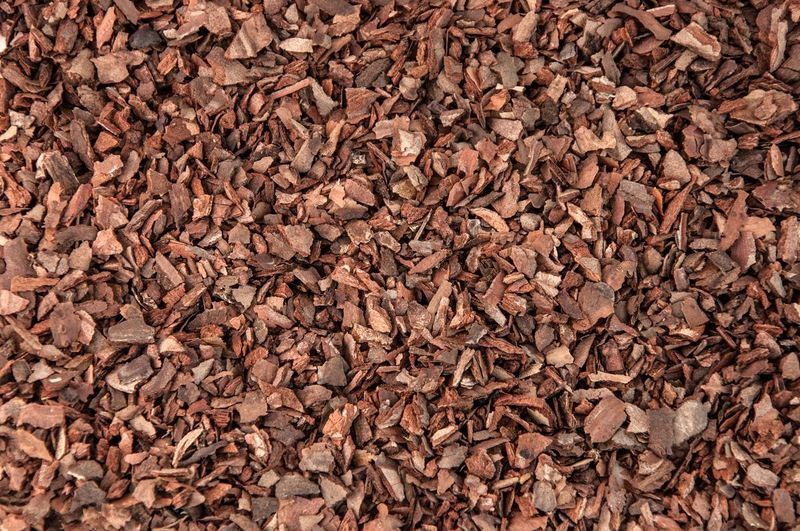
Bark mulch is a classic choice for gardeners seeking to maintain soil moisture and suppress weeds. Its aesthetic appeal adds a polished look to ornamental beds.
As bark mulch breaks down, it enriches the soil with essential nutrients, fostering a thriving plant environment. It’s crucial to select untreated bark to avoid unwanted chemicals.
The timeless charm and practicality of bark mulch make it a favored option, encouraging healthy landscapes and beautiful gardens.
Peat Moss
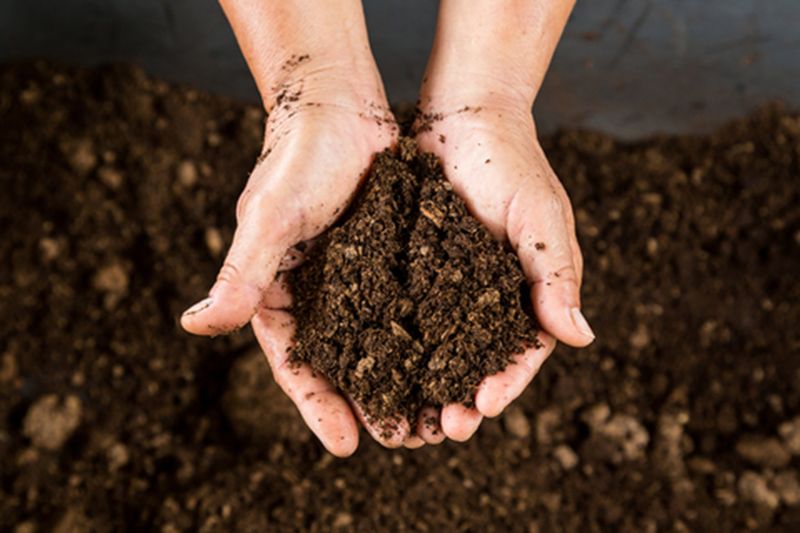
Peat moss is prized for its ability to retain moisture and improve soil texture, making it ideal for specific gardening needs. It’s particularly beneficial in sandy soils where water retention is a challenge.
However, peat moss should be used sparingly due to its acidic nature, which can alter soil pH. Using it in conjunction with other organic mulches can balance its effects.
Peat moss offers a specialized solution, enhancing plant growth while supporting a diverse and dynamic garden ecosystem.
Grass Clipping Compost

Grass clipping compost combines the abundance of clippings with the richness of compost. This fusion offers a nutrient-rich mulch that supports vigorous plant growth.
Properly composted clippings avoid the pitfalls of fresh grass, providing a balanced mix of nitrogen and carbon. This creates a fertile environment, encouraging strong root systems.
Embracing grass clipping compost enhances garden vitality, promoting a robust and sustainable gardening practice with its enriched benefits.
Leaf Mold
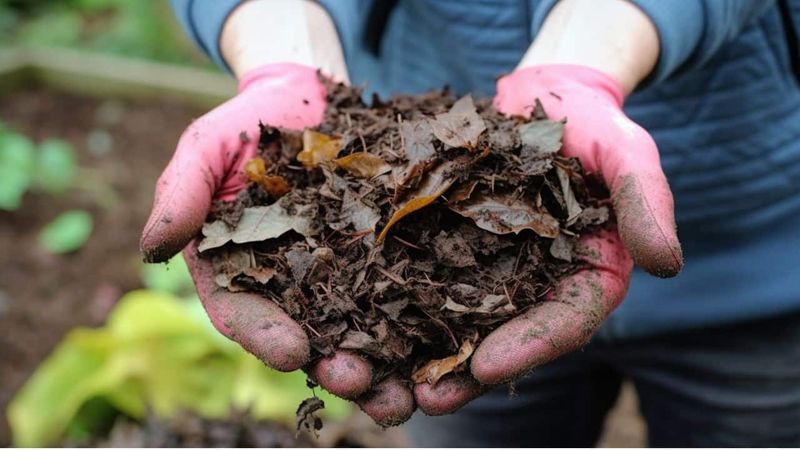
Leaf mold is a gardener’s secret weapon, offering superior moisture retention and soil improvement. Its rich, crumbly texture enhances soil structure, supporting healthy root development.
Creating leaf mold is simple, requiring only time and patience as leaves decompose naturally. This results in a mulch that fosters a thriving garden ecosystem.
Incorporating leaf mold into garden routines leads to enhanced plant growth and soil vitality, making it an invaluable asset for gardening enthusiasts.

